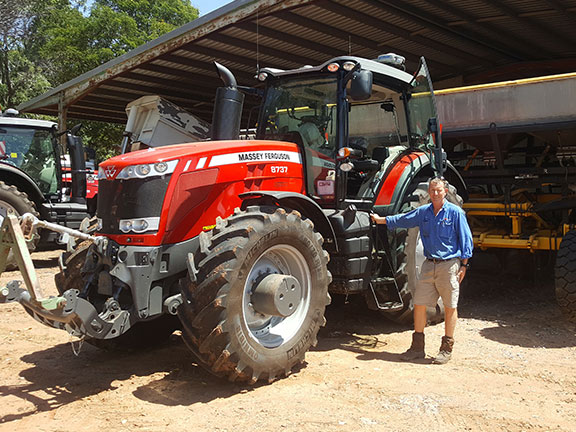Western Australia’s Oasis Farms has recently transitioned to two new Massey Ferguson tractors to service its 2000ha chia property.
 |
|
“Customers don’t buy tractors to brag to the neighbours or to look sexy, we want them to be reliable.”
|
Situated in Kununurra near Lake Argyle, the second largest artificial lake in the Southern Hemisphere, Oasis Farms owner Fritz Bolten uses Lake Argyle’s abundant water to irrigate his property.
Oasis Farms starting growing chia ten years ago, helping to kick-start the chia craze in Australia, though they also grow chickpeas, Rhodes Grass hay and mung beans.
After the business doubled in size, Bolten decided in 2013 to replace the farms previous tractor fleet with two Massey Ferguson tractors, the 340hp 8737 and the 290hp 8732 models.
His laser-levelled seedbeds are 1.8m wide to facilitate gravity-fed irrigation, while the Massey Ferguson tractors work on tramlines carrying 9.0 m-wide implements for cultivation, fertilising and other tasks.
Bolten says reliability is key for his operation and values a manufacturer that has sensible designs that work.
“Customers don’t buy tractors to brag to the neighbours or to look sexy, we want them to be reliable,” Bolton says.
“Massey Fergusons are built with logic. They have an open design to access hydraulic hoses and cables and air-conditioning and air fittings,” Bolten adds. “It is all simple enough that we could fix it if we had to.
“AGCO sent someone to train us and that should be standard for anybody buying a new tractor, especially one as capable as these ones – it was crucial for us to operate them properly,” Bolten adds.
Arriving in March, Oasis Farms opted for MF 8700 range tractors with front linkage and variable transmissions.
“We are used to continuously variable transmission, we really like it and we can fine-tune our work,” Bolten says. “We can change speed by 0.1 or 0.2 km/h on the run and when we feel the load is increasing we stop at that setting, It just means we work at maximum efficiency all the time.”
Another big issue for Fritz was avoiding a tractor that needed a diesel exhaust fluid.
“These models were the ones available without Adblue, maybe it’s the tropics or the warmer weather or a combination, but the previous one we had just wasn’t working,” Bolten says. “We were flying people up from the south so often to fix them, that any emissions we saved, they used.”

